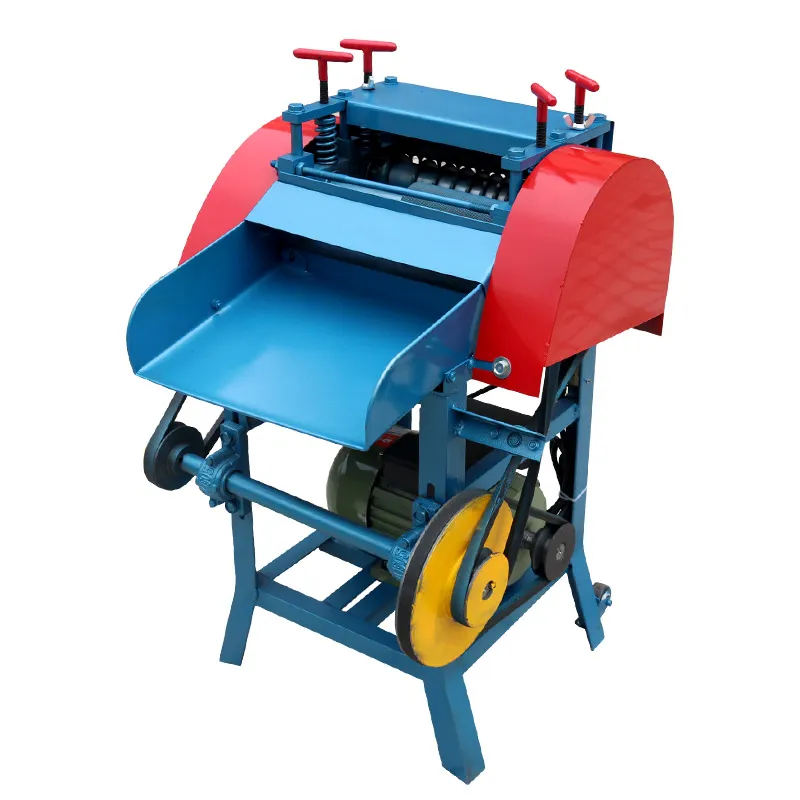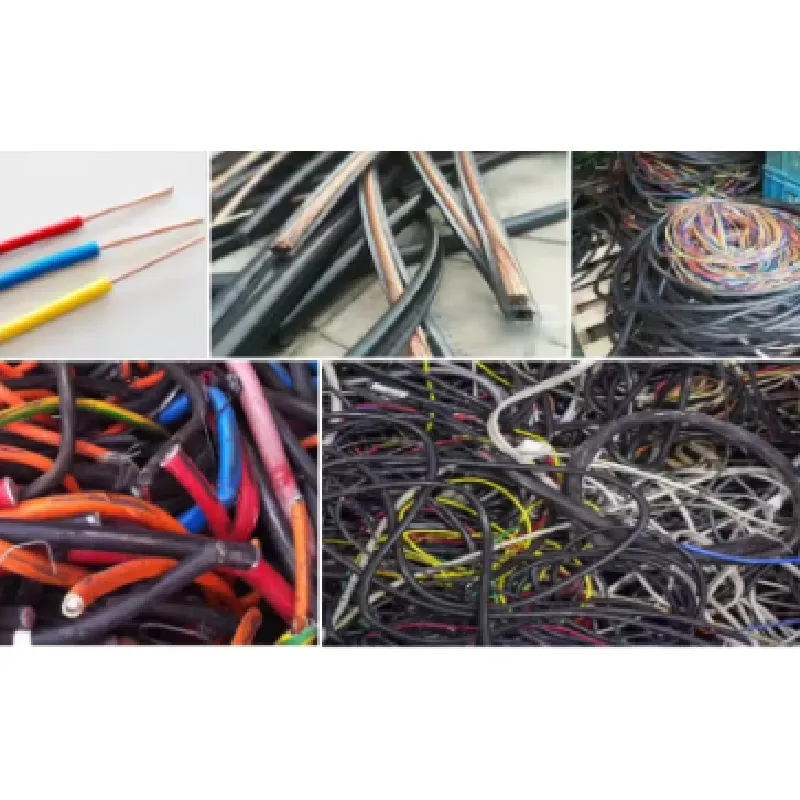
Sep . 02, 2025 04:00 Back to list
In the intricate landscape of modern industrial manufacturing, precision and efficiency are paramount. The demand for sophisticated cable and wire processing solutions has propelled the Wire Stripper Machine to the forefront as an indispensable asset. These advanced machines are engineered to meticulously remove insulation from electrical wires, cables, and conduits with unparalleled accuracy and speed, optimizing production workflows across a myriad of sectors. From delicate data cables to robust power transmission lines, the capability to process diverse wire types without damaging the conductor is critical for ensuring product integrity and operational safety.
The continuous evolution of electrical and electronic components necessitates corresponding advancements in wire processing equipment. Modern industrial environments, spanning sectors from automotive and aerospace to telecommunications and renewable energy, rely heavily on the consistent, high-volume, and precise performance of wire stripping technology. The shift towards automated and semi-automated systems reflects an industry-wide commitment to reducing manual labor, mitigating human error, and enhancing overall productivity while adhering to stringent quality standards.
The global wire and cable market is undergoing significant transformation, driven by infrastructure development, the proliferation of electronic devices, and the expansion of renewable energy projects. Consequently, the demand for more efficient, precise, and versatile Wire Stripper Machine solutions is escalating. Several key trends are shaping the future of this essential industrial equipment:
These trends underscore the industry's commitment to innovation, pushing the boundaries of what a Wire Stripper Machine can achieve in terms of performance, reliability, and economic viability.
Understanding the core technical specifications of a Wire Stripper Machine is crucial for selecting the right equipment for specific industrial applications. Key parameters define a machine's capability, precision, and suitability for various wire types and production demands. Below is a table outlining typical specifications for a high-performance industrial wire stripper.
| Parameter | Description / Value Range |
|---|---|
| Wire Diameter Range | 0.1 mm² to 75 mm² (AWG 30 to AWG 0) |
| Stripping Length | 1 mm to 200 mm (full strip or partial strip) |
| Cutting Length | 5 mm to 99,999 mm |
| Processing Speed | Up to 5,000-8,000 pieces/hour (depending on wire length and strip length) |
| Blade Material | High-speed steel (HSS), Tungsten Carbide, Ceramic |
| Drive System | Precision servo motors, Stepper motors |
| Control System | PLC (Programmable Logic Controller) with HMI (Human-Machine Interface) touch screen |
| Connectivity | Ethernet, USB, RS232 (for data logging, remote diagnostics) |
| Power Supply | 220V/380V AC, 50/60 Hz, Single/Three Phase |
| Air Pressure Requirement | 0.5 - 0.7 MPa (for pneumatic components, if applicable) |
| Dimensions (L x W x H) | Vary by model, typically 800mm x 700mm x 1200mm |
| Weight | 150 kg - 500 kg+ |
| Certifications | CE, ISO 9001 |
These specifications ensure that a Wire Stripper Machine can handle a wide range of tasks, from precise micro-stripping for electronics to heavy-duty stripping for power cables, all while maintaining high throughput and consistent quality.
The versatility of modern wire stripping technology allows its integration into a diverse array of industries, each benefiting from its precision and efficiency. From high-volume production lines to specialized niche applications, the adaptability of the Wire Stripper Machine is a cornerstone of its value proposition.
In each of these scenarios, the advantages are clear: enhanced safety through reliable electrical connections, reduced material waste from precise stripping, increased production throughput, and significant labor cost savings through automation. For instance, in an automotive wiring harness plant, automating the stripping process can increase output by over 30% while reducing re-work rates by 15%, directly impacting bottom-line profitability.
The development and manufacturing of a state-of-the-art Wire Stripper Machine involve a rigorous, multi-stage process designed to ensure durability, precision, and operational excellence. Adherence to international quality and safety standards is maintained throughout.
Initial design, including mechanical, electrical, and software components, is developed using CAD/CAM software. Product materials are meticulously selected:
Key components undergo advanced manufacturing processes:
Skilled technicians assemble the mechanical, electrical, and pneumatic subsystems. This includes installing servo motors, PLC control units, HMI touchscreens, and safety interlocks. Wiring and cabling are meticulously routed and secured according to electrical safety standards.
Each machine undergoes stringent calibration and testing. This includes:

This meticulous process ensures that the final Wire Stripper Machine delivered to clients in target industries like petrochemicals, metallurgy, and water supply & drainage, or high-tech sectors like aerospace, offers superior performance, reliability, and an extended operational lifespan.
The latest generation of Wire Stripper Machine technology offers a distinct set of technical advantages that significantly enhance productivity, precision, and operational safety in various industrial settings. These advancements are critical for meeting the ever-growing demands of modern manufacturing.
These advantages translate directly into increased productivity, higher quality output, reduced operational costs, and a safer working environment, making advanced wire strippers a strategic investment for any forward-thinking manufacturing enterprise.
Choosing the right Wire Stripper Machine vendor is a critical decision that impacts long-term operational efficiency and return on investment. While many providers exist, their offerings can vary significantly in terms of technology, support, and customization capabilities. This comparison focuses on common differentiating factors among leading industrial suppliers.
| Feature/Criterion | Vendor A (Premium Performance Focus) | Vendor B (Cost-Effective & Versatile) | Vendor C (Specialized Solutions) |
|---|---|---|---|
| Precision (Tolerance) | ±0.005 mm (Micro-stripping) | ±0.02 mm (Standard Industrial) | ±0.01 mm (Fiber Optic / Coaxial) |
| Max. Wire Gauge | 75 mm² (AWG 0) | 35 mm² (AWG 2) | 2.5 mm² (AWG 14) - Specialized |
| Processing Speed | Up to 8,000 pcs/hr | Up to 5,000 pcs/hr | Up to 2,000 pcs/hr (complex strips) |
| Automation Features | Full IoT, Predictive Maint., Auto-calibration | Semi-auto, HMI, Basic diagnostics | Robotic integration, Vision systems |
| Customization Options | Extensive, modular design, full engineering support | Limited, standard configurations | Deep customization for specific materials/tasks |
| After-Sales Support | Global network, 24/7 remote, onsite, dedicated account manager | Regional centers, online helpdesk, standard warranty | Niche expertise, direct factory support, extensive training |
| Certifications | ISO 9001, CE, UL, RoHS | CE, ISO 9001 | ISO 9001, industry-specific (e.g., aerospace) |
When evaluating a Wire Stripper Machine vendor, consider not only the initial purchase price but also long-term factors like machine longevity, spare parts availability, technical support responsiveness, and the potential for future upgrades. A vendor with decades of engineering excellence and robust support infrastructure often provides the best value over the machine's service life.
Off-the-shelf solutions, while suitable for many applications, may not always meet the precise and often unique requirements of specialized industrial processes. Recognizing this, leading manufacturers of Wire Stripper Machine technology offer comprehensive customized solutions, ensuring that equipment perfectly integrates into existing production lines and addresses specific challenges.
Customization options can range from minor modifications to complete bespoke system designs:
Engaging with a manufacturer that possesses deep engineering expertise and a proven track record in delivering customized solutions is essential. This partnership ensures that the final equipment not only meets current production demands but also offers the flexibility to adapt to future challenges and technological advancements.
The practical benefits of advanced Wire Stripper Machine technology are best illustrated through real-world applications. These case studies highlight how precision engineering and robust design translate into tangible improvements in productivity, quality, and cost efficiency for our diverse clientele.
A leading automotive parts supplier faced challenges with inconsistent strip lengths and conductor damage during manual wire preparation for complex vehicle wiring harnesses. Their existing semi-automatic machines struggled with the increasing variety of wire gauges and insulation materials, leading to high rejection rates and production bottlenecks.
Solution: We implemented a fully automated, multi-processing Wire Stripper Machine system featuring optical wire detection, servo-driven precision cutting and stripping, and integrated crimping modules. The system was designed to automatically adjust parameters based on scanned wire types.
A large-scale solar farm developer required efficient and robust solutions for stripping heavy-gauge DC and AC cables (up to 75 mm² or AWG 0) on-site and in their pre-assembly facility. Manual stripping was labor-intensive, slow, and often resulted in uneven strips, posing risks to electrical connections and system longevity. The cables featured tough, UV-resistant XLPE insulation.
Solution: We provided a heavy-duty, programmable Wire Stripper Machine equipped with hardened tungsten carbide blades and a powerful pneumatic clamping system. The machine was selected for its proven performance in harsh environments and its ability to handle large diameter wires with thick insulation layers, offering superior corrosion resistance and energy saving features.

A1: Our machines are designed to process a wide array of wire types, including single-core, multi-core, shielded, coaxial, and ribbon cables. They can strip insulation materials such as PVC, Teflon (PTFE), XLPE, silicone, fiberglass, and more, across a broad range of gauges from 0.1 mm² (AWG 30) up to 75 mm² (AWG 0).
A2: Our advanced machines utilize precision servo-driven blade systems with micron-level depth control. Optical sensors and intelligent software algorithms continuously monitor and adjust the cutting parameters to match the wire's exact diameter and insulation thickness, ensuring a clean strip without touching or nicking the conductor. This is further supported by high-quality, sharp blade materials like tungsten carbide.
A3: Our machines are designed for high durability and low maintenance. Regular maintenance typically involves routine cleaning, periodic lubrication of moving parts, and inspection/replacement of wear components like blades and feed rollers. Detailed maintenance schedules are provided in the operator's manual, and our support team is available for guidance. Predictive maintenance features are also integrated into advanced models.
A4: Absolutely. All our industrial wire stripping machines are designed and manufactured in strict compliance with international safety standards, including CE Marking for European markets and ISO 9001 for quality management systems. Features like emergency stops, safety interlocks, and fully enclosed operating areas are standard.
We understand that the timely acquisition and reliable operation of critical equipment are paramount for our B2B clients. Our commitments to lead time, warranty, and customer support for every Wire Stripper Machine are designed to provide unparalleled peace of mind and operational continuity.
We pride ourselves on building lasting partnerships with our clients, providing not just cutting-edge technology but also the reliable support infrastructure required to maximize your investment.
Latest news
Double Shaft Shredder Price Explained: Global Trends, Benefits & Vendor Comparisons
NewsNov.24,2025
Expert Insights into Double Shaft Shredder Factory: Boosting Global Recycling Efficiency
NewsNov.23,2025
Leading Double Shaft Shredder Suppliers for Industrial Recycling and Waste Management
NewsNov.23,2025
Leading Double Shaft Shredder Manufacturers | Durable & Sustainable Industrial Shredders
NewsNov.23,2025
Understanding Double Shaft Shredder Machine Price: Buyers’ Guide & Global Insights
NewsNov.22,2025
The Essential Guide to Double Shaft Shredders: Benefits, Applications & Trends
NewsNov.22,2025